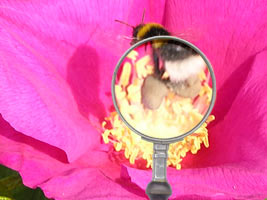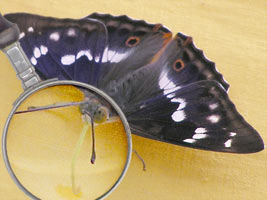About Legs
The thorax of an adult insect always comprises three segments, each with a pair of legs.
Legs are also made up of segments; the number of such segments is from 1 to 5, but not more.
If all pairs of legs are equally developed, such legs are called ambulatories or walking (walkingsticks, ground beetles). Such legs are adapted for walking over firm surface.
How do water striders manage to walk over water? On their legs there is a fat layer preventing wetting of the legs and allowing the insect to remain on the water surface.
Moving in big leaps is advantageous in life in grass or foliage of trees. In many insects moving in that way we see elongated strong femurs and long tibiae of the hind legs. Such legs in locusts, grasshoppers, leaf beetles, fleahoppers are called saltatorial.
The life of adult insects in the soil leads to enhancing the role of the forelegs. Such insects have limbs for shoveling with typical spatulate enlargements of the tibiae. This can be observed, for example, in mole crickets (Gryllotalpidae), hister beetles (Histeridae), and others.
In insects that use forelegs for catching pray, femurs and tibiae of the forelegs are elongated and have spines. Such legs are called clasping. Examples — mantispids, mantises (Mantodea or Mantoptera).
Many insects living only in water have legs with elongated flat tibiae covered with long hairs. Such legs, serving as oars, are present in water bugs (Cryptocerata) and water beetles: true water beetles (Dytiscidae) è crawling water beetles (Haliplidae).

Bees and bumblebees have a whole set of instruments on the legs. Among them are brushes for collecting pollen, baskets for carrying this pollen, and brushes for cleaning the body of pollen.
Besides it, on insects’ legs there are also organs of sense.
Let us recall that with the help of legs grasshoppers, true crickets, and mole crickets hear.

If a butterfly is placed on a cotton wool wetted with sweet syrup, the butterfly feels the sweet and uncoils the proboscis.
Flies also can taste by their legs.
.jpg)
-2.jpg)